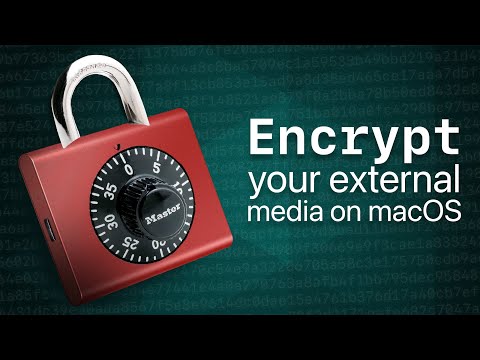Connie Yang is the primary columnist in the computer field at iBoysoft. She is enthusiastic about sharing tech tutorials on data recovery and operating system-related problems resolution. Over the years, Connie has published many computer-related guides and introductory articles.
Encrypting USB Drives on macOS for Enhanced Data Security Timestamped
1. 00:00 🔒 Encrypting external media on macOS is easy and does not require special software, but it will reformat the drive and delete all its contents, so be sure to back up your data first.
If you don't want to erase all content on your external USB for disk encryption or want to encrypt the USB for both macOS and Windows, you can use iBoysoft BitLocker for Mac.
This easy-to-operate and powerful disk encryption tool can help you encrypt NTFS, exFAT, or FAT32 external hard drive or USB drive with Microsoft BitLocker To Go - the advanced full disk encryption feature that is only available in Windows.
Then, you can use this encrypted USB for cross-platform data transfer securely.
Here's how:
- Download, install, and open iBoysoft BitLocker for Mac on your Mac.
- Click the Encrypt button on the toolbar > the Encrypt button next to the USB drive.
- Enter your password and then select a way to save the 48-digit recovery key.
- Click "Start encrypting" to begin encrypting your USB drive.
2. 01:02 💻 Launch Disk Utility, select "Show All Devices", erase the device, set the scheme to GUID Partition Map, and choose an encryption option from the format.
3. 01:29 💡 Case sensitivity in file systems means that the capitalization of file names matters, and it is generally considered more correct for UNIX file systems.
4. 02:17 🔒 Set a password for the encrypted USB drive and save it in your Apple keychain to avoid being prompted for the password every time the drive is plugged in.
5. 02:39 💻 If the encryption process fails, manually unmount the volume within the device, click eject, then restart the process to successfully encrypt the external USB drive on macOS.
Encrypting USB Drives on macOS for Enhanced Data Security Video Summary
📦 The process of encrypting external media will reformat the drive in question, thus losing all its contents, so be sure to have all your data backed up before encrypting.
🔒 Selecting the encryption option is crucial when formatting an external USB drive on macOS.
🔒 Setting a password for an encrypted USB drive is crucial, as there is no way to recover it if forgotten.
🔄 Unfortunately, it's not uncommon for this process to fail.
FAQs about Encrypting USB Drives on macOS for Enhanced Data Security
- QWhy is there no option to encrypt USB drive on Mac?
-
A
To encrypt a hard drive on Mac, you have no options except reformat the drive. Of course, that will erase all content on the drive and you need to make a backup before reformatting. If you think it's time-consuming and complicated, you can use iBoysoft BitLocker for Mac to help you directly encrypt the USB drive without formatting.
- QHow to encrypt exFAT drive on Mac?
-
A
You need to back up the exFAT drive first and then reformat it to APFS (Encrypted) in Disk Utility. If you need to use the exFAT drive for cross-platform use, you can use iBoysoft BitLocker for Mac. This tool will use Microsoft BitLocker To Go to encrypt the exFAT on your Mac for full disk encryption. Then, whenever you connect it to your Mac or PC, you can enter a password to access files on it.
To encrypt a hard drive on Mac, you have no options except reformat the drive. Of course, that will erase all content on the drive and you need to make a backup before reformatting. If you think it's time-consuming and complicated, you can use iBoysoft BitLocker for Mac to help you directly encrypt the USB drive without formatting.
You need to back up the exFAT drive first and then reformat it to APFS (Encrypted) in Disk Utility. If you need to use the exFAT drive for cross-platform use, you can use iBoysoft BitLocker for Mac. This tool will use Microsoft BitLocker To Go to encrypt the exFAT on your Mac for full disk encryption. Then, whenever you connect it to your Mac or PC, you can enter a password to access files on it.


